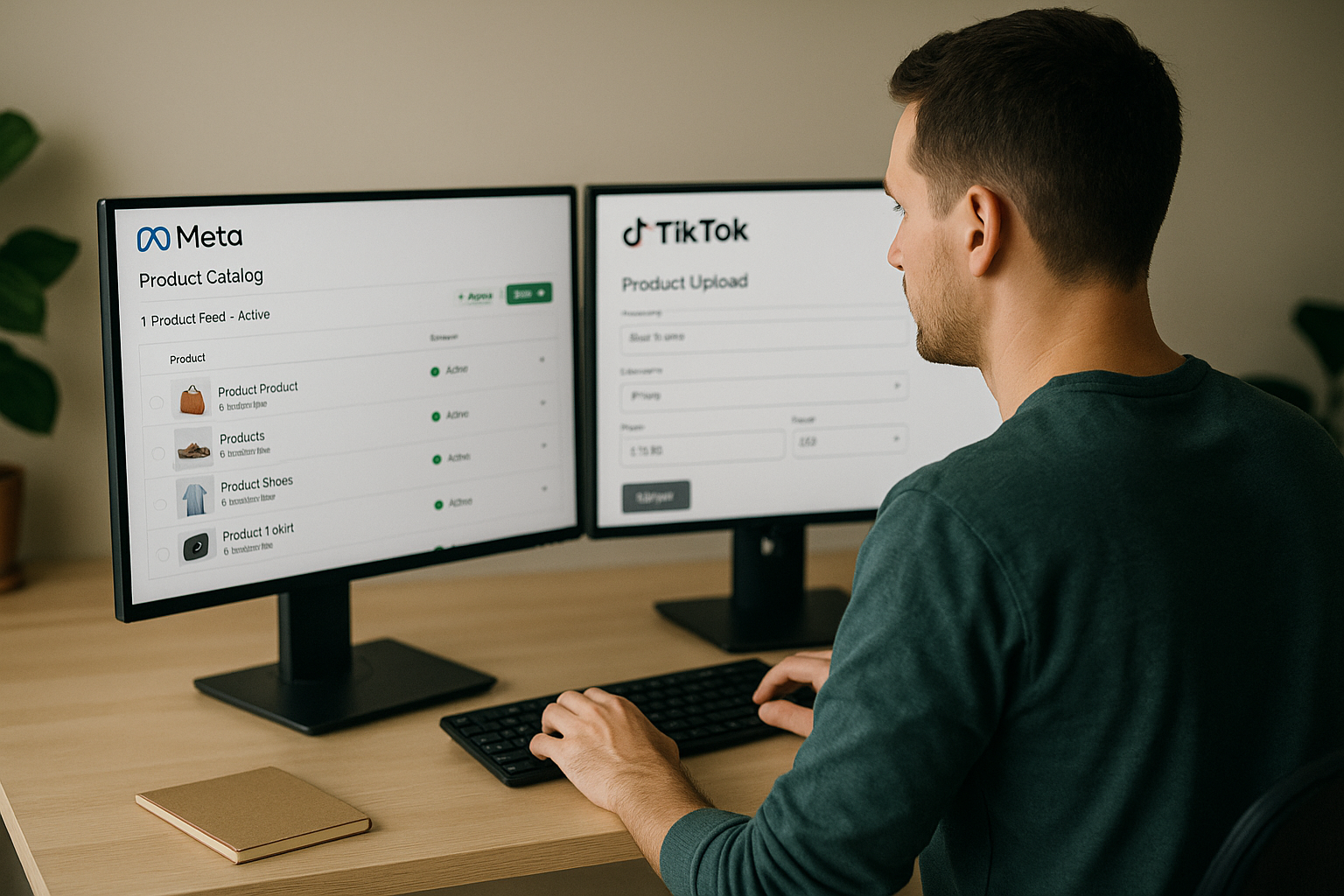.png)

How Meta, TikTok, and AI Feeds Read PDPs

⚡ TL;DR — How Meta, TikTok, and AI Feeds Read PDPs
- These platforms ingest product fields—not descriptions
- Incomplete schema = no Shop or Feed visibility
- AI engines like SGE extract structured data
- Future visibility depends on feed alignment
Social platforms and AI engines don’t visit your PDP to admire the design.
They don’t scan your copy for branding voice.
They extract fields.
Meta, TikTok, and AI search systems like Google’s SGE read your PDP structurally—using JSON-LD, product feeds, and metadata to power product cards, ads, and smart discovery units.
If your PDP isn’t built with structured data in mind, it might look perfect—but still disappear.
Platforms Parse Fields, Not Pages
Let’s break it down.
✅ Meta
Facebook Shops and Instagram Shopping use Meta Commerce product catalogs populated via:
- Direct PDP scraping
- Scheduled product feed ingestion
- Manual input via PIM Systems or Shopify/BigCommerce plugins
Meta relies heavily on:
- Title, brand, price, and availability fields
image_link,gtin, andcondition- Canonical URL to ensure deduplication
- Sync logic that respects Update Cadence
Schema is optional—but broken feeds or mismatched PDP data will cause disapprovals.
✅ TikTok
TikTok Shop is schema-dependent and feed-driven.
It extracts core PDP fields through:
- Scheduled feed syncing (via Product Schema)
- TikTok Schema enhancements
- Field-level metadata like variant relationships, swatch images, and size availability
If your PDP has misaligned values or incomplete tags, your product card simply won’t appear. There are no warnings—just invisibility.
How AI Engines Read PDPs
With Google’s Search Generative Experience (SGE), Bing Copilot, and retail-focused LLMs, the future of discovery is AI-native. That means your PDP must be machine-readable, structured, and aligned.
AI systems don’t parse prose—they scan:
- JSON‑LD markup
- Field-level data: price, reviews, brand, SKU, description
- Image metadata (via Alt Text)
- Structured PDP Fields from catalogs and feeds
This enables them to build answer summaries, comparative tables, and product overviews—with or without your page actually being visited.
If your PDP isn’t ready for AI Feed Parsing, you’re excluded from the next generation of visibility.
Gaps Between PDPs and Platform Data
Most brands don’t realize how wide the disconnect is between their PDP and what platforms actually ingest.
Examples of visibility-killing mismatches:
- Feed says “out of stock,” PDP says “in stock” → disqualified from Shopping feeds
- Schema lists a different
gtinthan the product catalog → no match - Missing image
alttext or broken variant logic → AI models downrank your product - Content Expiration not managed → PDP gets flagged as stale in smart feed systems
These aren’t cosmetic issues. They’re structural gaps.
See: Feed Drift, PDP Drift, and Content Sync
Future-Proofing for AI Discovery
To stay visible across platforms—especially AI-powered ones—your PDP needs to follow three principles:
- Structure Everything
Move all key data into machine-readable fields. No floating price tags or decorative review stars. - Sync Relentlessly
Align catalog, PDP, and feed data. Keep Field Consistency tight. Monitor via Change History Log. - Validate Continuously
Run regular Health Audits. Test schema validity. Validate feed outputs. Update metadata on a defined Update Cadence.
Your PDP isn’t a landing page anymore. It’s a structured object in a much larger system.
Bottom Line
Meta. TikTok. Google. SGE. Copilot.
They don’t care what your PDP looks like—they care what it’s made of.
If the structured fields are clean, current, and complete, your product gets surfaced.
If not, it vanishes—quietly.
